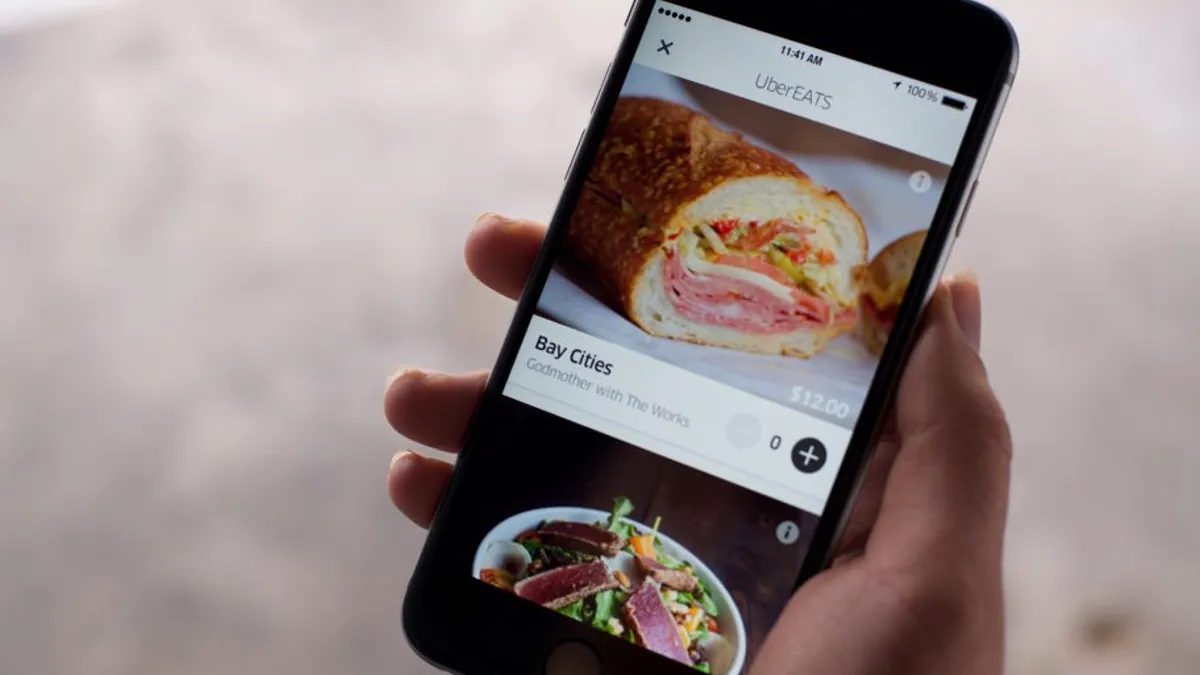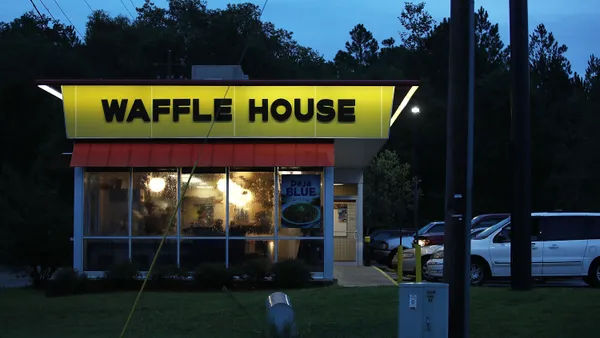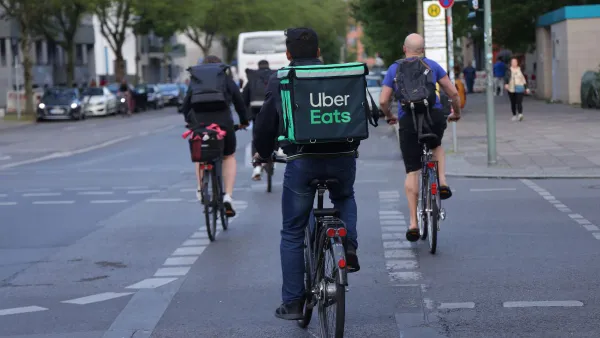Dive Brief:
- Uber Eats plans to introduce 400 “virtual restaurants” in the U.K by the end of this year. According to The Telegraph, the virtual restaurants use existing restaurants’ kitchen spaces to cook food and fill gaps in the market.
- The virtual restaurants appear on the Uber Eats app, which means to-go menus and offerings that only exist on the app can be made available in markets with limited restaurant options. For example, a restaurant concept called Sushi Circle has begun serving Poke, a Hawaiian dish, to take advantage of an underutilized kitchen.
- Uber Eats launched virtual restaurants in the U.S. in January 2017. U.K. delivery competitor Deliveroo launched virtual restaurants earlier this year.
Dive Insight:
Consumers have responded favorably to Uber Eats’ virtual restaurants in the U.S. and elsewhere — the company now has more than 1,600 virtual restaurants globally less than two years after the concept’s launch.
The idea is as efficient as it gets on paper: Existing restaurants willing to take on additional menu items under the façade of a new concept and eateries without a brick-and-mortar operation share already-existing kitchen space. Startup costs are minimal, as is the risk. For consumers, they get to order high-demand items that were previously non-existent in the market.
This idea essentially creates a new competitive marketplace, and for the delivery companies taking advantage — including Uber Eats, Deliveroo and Grubhub (which has invested in Green Summit Group, a startup with virtual restaurants operating from one kitchen) — it creates a big differentiator in the increasingly competitive food delivery space. Offering in-demand menu items from a concept that doesn’t exist anywhere except on the delivery company's app gives that third-party service a major leg up in the quickly-growing $30 billion space.
It can also offer restaurant operator partners a new sales channel and a chance to diversify their menus. But will these virtual kitchens deter entrepreneurs from opening an innovative new concept? Perhaps.
Another potential downside: Delivery companies are notorious for high commission fees, inconsistent handling and insufficient packaging. Also, what happens if there is a customer complaint or if a menu item sells out? In this scenario, who handles those issues is unclear.
These virtual concepts might also be at a disadvantage because they don’t have the Instagrammable marketing ability that brick-and-mortar restaurants have on these apps. Chances are this is a minor issue, however, as most consumers using third-party delivery are looking for convenience, not social media fodder.
On the flip side, the big winner with this concept is the consumers. Companies like Uber Eats are leveraging their vast technology infrastructures to pull data that identifies major food demand gaps in certain markets. Virtual restaurants offer a chance to fill those holes relatively quickly.
Virtual restaurants — coupled with concepts like shared-kitchen space Kitchen United, to-go/delivery-only prototypes from major brands like Chick-fil-A and Square’s popup restaurants facilitated by delivery company Caviar — underscores that the future of the restaurant industry extends well beyond physical locations. So far, these extensions have yielded much success. Caviar's New York City popup, for example, experienced 25% of its orders from new customers, while Uber Eats continues to grow its virtual presence and Kitchen United just secured $10 million in funding.
Third-party delivery services sales in general totaled $5 billion for the first two quarters of 2018, a 55% jump from the year-ago period, according to Technomic. With a growing virtual channel fulfilling consumer demand added to the mix, this growth is sure to continue.













